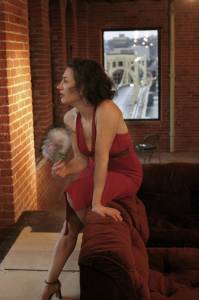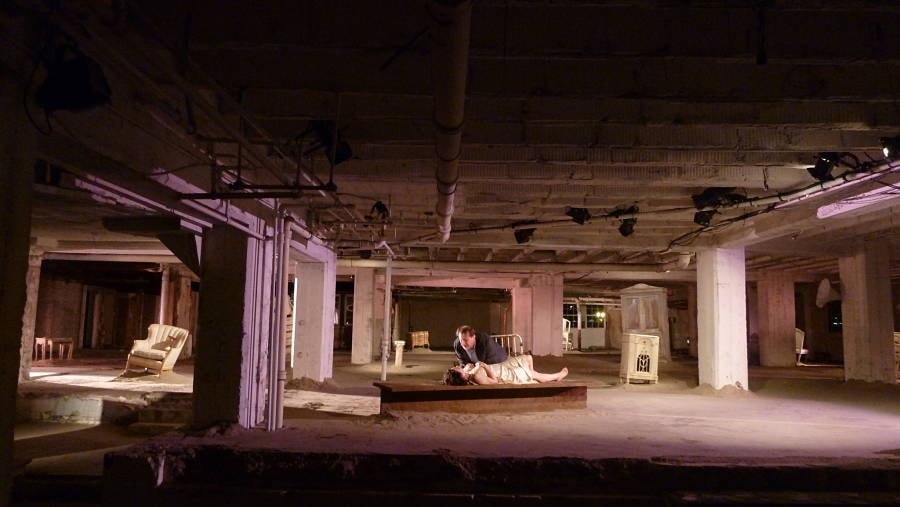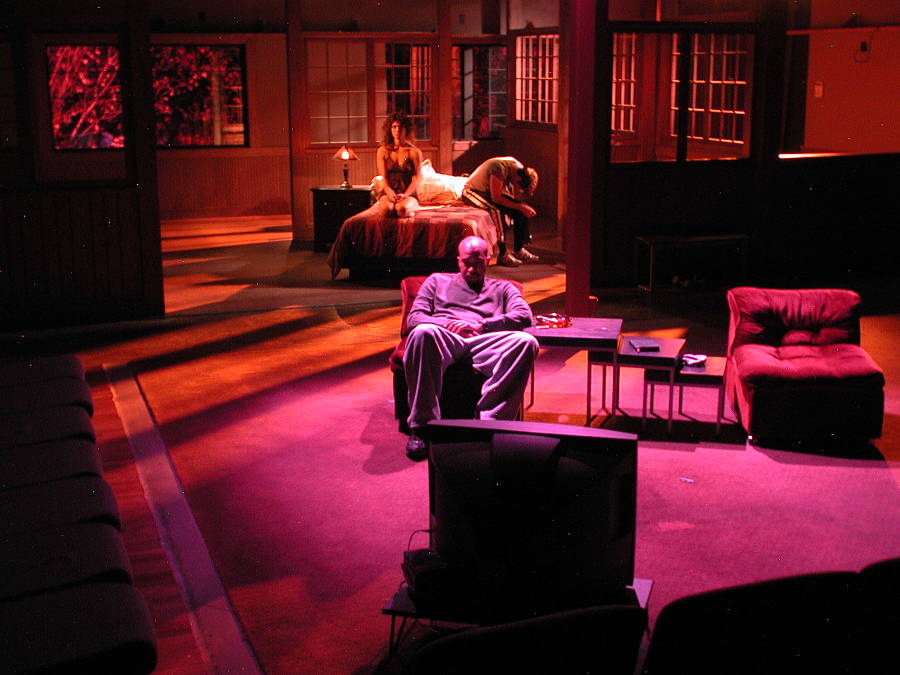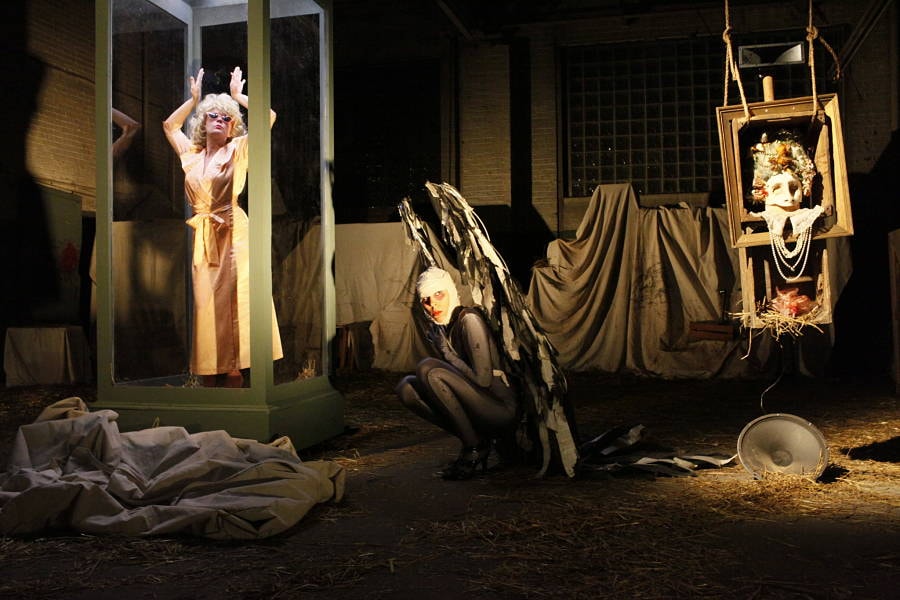PITTSBURGH, PA.: This mid-sized Rust Belt city isn’t just the home of 446 bridges criss-crossing three rivers and a reasonably healthy tech sector that’s done its part to take up some of the post-industrial slack; it’s also the birthplace of Andy Warhol, Martha Graham and Rachel Carson. That independent, even oppositional spirit would seem to inform the ethic and aesthetic of the outward-looking, persistently site-specific Quantum Theatre, which has staged avant-garde European dramas and operas in translation, as well as spiky new English and American plays, as well as hard-to-define multimedia hybrids, in spaces ranging from the former Heppenstall Steel Plant to, appropriately enough, the Andy Warhol Museum.
The theatre’s motto is “incubator for the amazing.” Artistic director Karla Boos talks about why she chose Pittsburgh to do her global-thinking but local-focused work and how the city has embraced it.

American Theatre: Who founded Quantum Theatre, when, and why?
Karla Boos, Quantum Theatre artistic director: I did, in 1990. Next year’s our 25th anniversary. I had been a graduate student at CalArts, stayed in L.A. a few years working in the experimental theatre, and started to travel to pursue artists who really interested me, like Robert Lepage, the early work of Complicite. I knew I wanted to make my own work, carve a path, and had been in Pittsburgh as an undergraduate. I figured there wasn’t this kind of experimentation happening there and knew it was a friendly, approachable city where I might find a willing ear. What I didn’t know was that it’s also full of great and adventurous arts supporters and that the physical landscape of the city itself would be endlessly inspiring to me.
What sets your theatre apart from others in your region?
Its international outlook—we work with artists from other places. Eclecticism. A large percentage of our work is new at this point. I don’t mean first productions of new plays, although there’s a bit of that; I mean we make original work ourselves and it’s all over the map. Right now we’re making an adaptation of José Saramago’s Nobel Prize-winning book All the Names; the team includes Barbara Luderowski, the founder of the Mattress Factory, an installation art museum, and a great filmmaker, Joe Seamans, as well as very unusual theatre people.
Another upcoming project is an assembled baroque opera with text based on Shakespeare’s The Winter’s Tale. It’s a collaboration with a baroque ensemble called Chatham Baroque and dancers called Attack Theatre. We’ve done Osvaldo Golijov’s Ainadamar with an orchestra of 25 and great flamenco artists.
The thing that people most think sets us apart is our environmental approach. No works happen in theatres; we transform really wonderful, unusual environments for each show, so that’s a pretty big aspect of our experimentation—and of our audience’s, too.
Who is your audience?
Quantum’s audience is made up of the most adventurous of folks—people willing to go having no idea what they’ll see, and frequently to a place they’ve never been. They’re all ages and backgrounds. They’ve been rained on, frozen, and boiled, but they’ve also seen fireworks go off at sunset at exactly the right moment, with a flock of wild geese for good measure—that sort of thing.

Tell us about your favorite theatre institution other than your own, and why you admire it.
I couldn’t name one favorite. I love the Traverse Theatre in Scotland. Ariane Mnouchkine’s Theatre du Soleil. Pina Bausch’s company, still, post her passing. I’m really loving Aurelien Bory in Toulouse. I’ve seen wonderful work at Pig Iron in Philadelphia.
How do you pick the plays you put on your stage?
Completely idiosyncratically. Just do stuff that moves and compels me and that I don’t understand at all.
What’s your annual budget, and how many artists do you employ each season?
About $750,000; maybe 50 or 60.
What show are you working on now? Anything else in your season that you’re especially looking forward to?
Very next up is Aditi Brennan Kapil’s play Brahman/I, first in her Displaced Hindu Gods Trilogy, to be directed by Shishir Kurup and starring Sanjiv Jhaveri. It’s completely exciting—what great and unusual writing and thinking! And then my beloved All the Names, that one I’m working on as an artist in the team.

Strangest or funniest thing you’ve ever seen (or put) on your stage?
Seen? Maybe the guy who cooked and ate the lobster—had to look it up just now: Rodrigo Garcia’s Accidens. Good—creepy, but good, I thought. Put onstage? Ah, I guess our original adaptation of Edogawa Rampo’s story The Human Chair: Guy is living inside chair, chair is his protection from the world; falls in love with woman who sits in the chair. We staged it in this strange former call center from the early ’90s, where the callers sat in concentric rows of built-in tables, with ancient computers. The performers were on these tables and certain things happened on the ancient monitors—not totally successful, I’ve gotta say.
What are you doing when you’re not doing theatre?
I read fiction voraciously. I love to travel, and try not only to travel for theatre. I like music—I’m really into chamber music of various kinds these days. I like to ride my bike and look at my city. I try to know what’s going on in the world and direct my outrage a tiny bit usefully if I can.
What does theatre–not just your theatre, but the American or world theatre–look like in, say, 20 years?
I’m the wrong person to ask, because I feel disconnected from a lot of contemporary… ways. And, of course, at my age, I’m not positive I’ll still be making it in 20 years, although it’s weird to say so.


